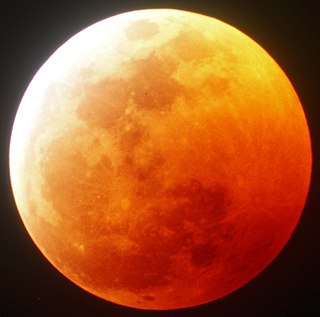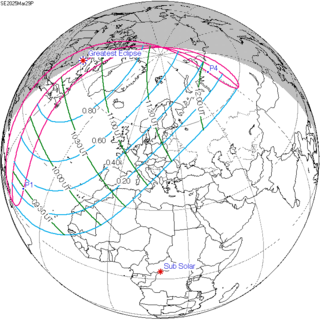Related Research Articles
The 1630s BC was a decade lasting from January 1, 1639 BC to December 31, 1630 BC.
The 1690s BC was a decade lasting from January 1, 1699, BC to December 31, 1690, BC.
The 1550s BC was a decade lasting from January 1, 1559 BC to December 31, 1550 BC.
The 1520s BC was a decade lasting from January 1, 1529 BC to December 31, 1520 BC.
The 1490s BC was a decade lasting from January 1, 1499 BC to December 31, 1490 BC.

The 1400s BC is a decade which lasted from 1409 BC to 1400 BC.
The saros is a period of exactly 223 synodic months, approximately 6585.321 days, or 18 years, 10, 11, or 12 days, and 8 hours, that can be used to predict eclipses of the Sun and Moon. One saros period after an eclipse, the Sun, Earth, and Moon return to approximately the same relative geometry, a near straight line, and a nearly identical eclipse will occur, in what is referred to as an eclipse cycle. A sar is one half of a saros.
The inex is an eclipse cycle of 10,571.95 days. The cycle was first described in modern times by Crommelin in 1901, but was named by George van den Bergh who studied it in detail half a century later. It has been suggested that the cycle was known to Hipparchos. One inex after an eclipse of a particular saros series there will be an eclipse in the next saros series, unless the latter saros series has come to an end.

A total lunar eclipse took place on 15 June 2011. It was the first of two such eclipses in 2011. The second occurred on 10 December 2011. While the visual effect of a total eclipse is variable, the Moon may have been stained a deep orange or red colour at maximum eclipse.

A total lunar eclipse took place on Tuesday 9 January 2001, the first of three lunar eclipses in 2001. A shallow total eclipse saw the Moon in relative darkness for 1 hour 1 minute and 2 seconds. The Moon was 18.89% of its diameter into the Earth's umbral shadow, and totality was observed in all of Europe, Africa, and Asia. The partial eclipse lasted for 3 hours 16 minutes and 19 seconds and was visible in parts of north-eastern North America and Australia. It is the only total eclipse of 2001. It was visible over Asia and Western Australia with the Middle East getting mid eclipse at midnight.

A total lunar eclipse took place on 4 April 2015. It is the former of two total lunar eclipses in 2015, and the third in a tetrad. Other eclipses in the tetrad are those of 15 April 2014, 8 October 2014, and 28 September 2015.

A penumbral lunar eclipse took place on Thursday, 18 August 2016. It was the second of three lunar eclipses in 2016. This was 3.7 days before the Moon reached perigee. There are multiple ways to determine the boundaries of Earth's shadow, so this was a miss according to some sources. The HM National Almanac Office's online canon of eclipses lists this event as the last eclipse on Saros Series 109, while NASA lists August 8, 1998 as the last eclipse of the series, and has this event missing the shadow.

A total lunar eclipse will take place on May 26, 2040. The northern limb of the Moon will pass through the center of the Earth's shadow. This is the second central lunar eclipse of Saros series 131.
A total lunar eclipse took place on Tuesday, July 6, 1982, the second of three total lunar eclipses in 1982, and the only one that was in the descending node. A dramatic total eclipse lasting 1 hour and 46 minutes plunged the full Moon into deep darkness, as it passed right through the centre of the Earth's umbral shadow. While the visual effect of a total eclipse is variable, the Moon may have been stained a deep orange or red colour at maximum eclipse. This was a great spectacle for everyone who saw it. The partial eclipse lasted for 3 hours and 56 minutes in total.

A total lunar eclipse took place on Sunday, July 26, 1953.

A total penumbral lunar eclipse is a lunar eclipse that occurs when the Moon becomes completely immersed in the penumbral cone of the Earth without touching the umbra.

A total lunar eclipse will take place on May 6, 2069. The eclipse will be a dark one with the southern tip of the Moon passing through the center of the Earth's shadow. This is the first central eclipse of Saros series 132.

A partial solar eclipse occurred on March 18–19, 2007. A solar eclipse occurs when the Moon passes between Earth and the Sun, thereby totally or partly obscuring the image of the Sun for a viewer on Earth. A partial solar eclipse occurs in the polar regions of the Earth when the center of the Moon's shadow misses the Earth.

A partial solar eclipse will occur on Saturday, March 29, 2025. A solar eclipse occurs when the Moon passes between Earth and the Sun, thereby totally or partly obscuring the image of the Sun for a viewer on Earth. A partial solar eclipse occurs in the polar regions of the Earth when the center of the Moon's shadow misses the Earth.

A total solar eclipse will occur on May 11, 2097. A solar eclipse occurs when the Moon passes between Earth and the Sun, thereby totally or partly obscuring the image of the Sun for a viewer on Earth. A total solar eclipse occurs when the Moon's apparent diameter is larger than the Sun's, blocking all direct sunlight, turning day into darkness. Totality occurs in a narrow path across Earth's surface, with the partial solar eclipse visible over a surrounding region thousands of kilometres wide.
References
- ↑ "NASA - Lunar Eclipses of Saros Series 1 to 175". sunearth.gsfc.nasa.gov. Archived from the original on 11 July 2007. Retrieved 13 January 2022.